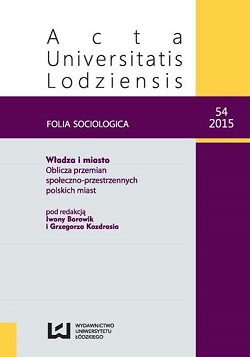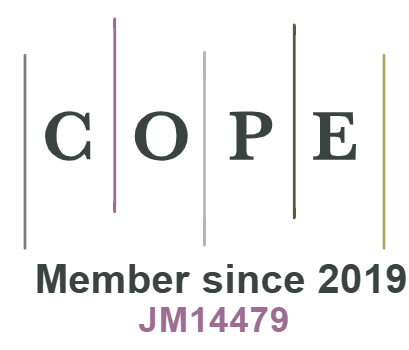Badanie miasta − stare i nowe pytania
DOI:
https://doi.org/10.18778/0208-600X.54.02Słowa kluczowe:
miasto, klasa twórcza, twórcze miastaAbstrakt
Artykuł przedstawia, z perspektywy socjologa, niektóre metodologiczne problemy badania miasta. Autorzy zajmujący się tą problematyką poruszają się między próbami tworzenia teorii funkcjonowania miast i modelowania ich rozwoju a opisem zmieniającej się miejskiej rzeczywistości, a więc śledzenia jej historii. W pierwszym nurcie spotykamy prace mniej lub bardziej sformalizowane, jak np. Louisa Wirtha, Richarda Floridy, czy zmatematyzowaną koncepcję fizyków Geoffreya Westa i Louisa Bettencourta. Drugi nurt reprezentują np. Max Weber i Fernand Braudel i wielu innych. Autor tego tekstu, nie negując pewnych pożytków pierwszego nurtu, jest jednak zdania, że podejście historyczno-opisowe znacznie lepiej, przynajmniej na razie, wyjaśnia procesy rozwoju miast.
Bibliografia
Braudel F. (1992), Kultura materialna, gospodarka i kapitalizm XV−XVIII wiek. Struktury codzienności, PIW, Warszawa.
Google Scholar
Darchen S., Tremblay D.-G. (2010), La thèse de la classe créative. Revue des écrits et perspectives des recherche, [w:] Tremblay R., Tremblay D.-G., La classe creative selon Richard Florida. Un paradigme urbain plausible, Presse de l’Université du Québec, Presses Universitaires de Rennes.
Google Scholar
Dogan M., Pahre R. (1991), L’innovation dans les sciences sociales. La marginalité créatrice, PUF, Paris.
Google Scholar
DOI: https://doi.org/10.3917/puf.dogan.1991.01
Florida R. (2004), The Rise of Creative Class, Perseus Books, New York.
Google Scholar
Florida R. (2005), Cities and the Creative Class, Routledge, New York − London.
Google Scholar
DOI: https://doi.org/10.4324/9780203997673
Florida R. (2008), Who’s Your City?, Perseus Books, New York.
Google Scholar
Guillaud H. (2011), Comprendre les lois de la ville, portal: InternetActu.net, http//www.internetactu.net/2011/01/06/comprendre-les-lois-de-la-ville/.
Google Scholar
Shearmur R. (2010), L’aristocratie mobile du savoir et son tapis rouge. Quelques réflexions sur les thèses de Richard Florida, [w:] Tremblay R., Tremblay D.-G., La classe creative selon Richard Florida. Un paradigme urbain plausible, Presse de l’Université du Québec, Presses Universitaires de Rennes.
Google Scholar
DOI: https://doi.org/10.2307/j.ctv18phg6g.7
Tremblay R., Tremblay D.-G. (2010), Richard Florida. L’Homme et sa classe, [w:] Tremblay R., Tremblay D.-G., La classe creative selon Richard Florida. Un paradigme urbain plausible, Presse de l’Université du Québec, Presses Universitaires de Rennes.
Google Scholar
DOI: https://doi.org/10.2307/j.ctv18phg6g
Vivant E. (2010), Vers un urbanisme creative, [w:] Tremblay R., Tremblay D.-G., La classe creative selon Richard Florida. Un paradigme urbain plausible, Presse de l’Université du Québec, Presses Universitaires de Rennes.
Google Scholar
DOI: https://doi.org/10.2307/j.ctv18phg6g.9
Weber M. (2002), Gospodarka i społeczeństwo, PWN, Warszawa.
Google Scholar
Wirth L. (1938), Urbanism as a Way of Life, “American Journal of Sociology”, no LXIV.
Google Scholar
DOI: https://doi.org/10.1086/217913
Pobrania
Opublikowane
Jak cytować
Numer
Dział
Licencja
Prawa autorskie (c) 2015 © Copyright by Bohdan Jałowiecki, Łódź 2015; © Copyright for this edition by Uniwersytet Łódzki, Łódź 2015

Utwór dostępny jest na licencji Creative Commons Uznanie autorstwa – Użycie niekomercyjne – Bez utworów zależnych 4.0 Międzynarodowe.










